Any Way To Repair Install Windows 10?
System corruption is i of the most astringent problems that agonize Windows 10 users. Corruption manifests in a diversity of ways, ranging from random blue or blackness screens of decease (BSOD) to driver errors.
If yous've tried everything else, y'all might desire to experiment with three tools that come pre-installed with Windows.
The best gratis tools come packed by default with Windows 10: System File Checker (SFC), Deployment Imaging Service and Management (DISM), and the Windows Troubleshooters. All three tools offer straightforward and quick paths for repairing some of the most common Windows 10 corruption issues.
If you lot've ever suffered from a reoccurring computer problem that's not related to commuter errors, file arrangement abuse is a likely culprit.
1. System File Checker
The best tool for repairing damaged Windows installations is System File Checker (SFC). Like many of Microsoft's most powerful repair tools, SFC runs from the control line. After executing the program, information technology inspects Windows for signs of damage. When it detects damaged files, SFC automatically repairs them.
To get the most out of the Arrangement File Checker, you should boot your system in Safe Mode. Also, you may want to restart your computer in Safe Mode before get-go the troubleshooting process. Still, this step isn't required.
To use SFC, open an elevated control prompt by typing command prompt into the Windows ten search bar, and selecting Run every bit administrator. Here's what information technology looks like:
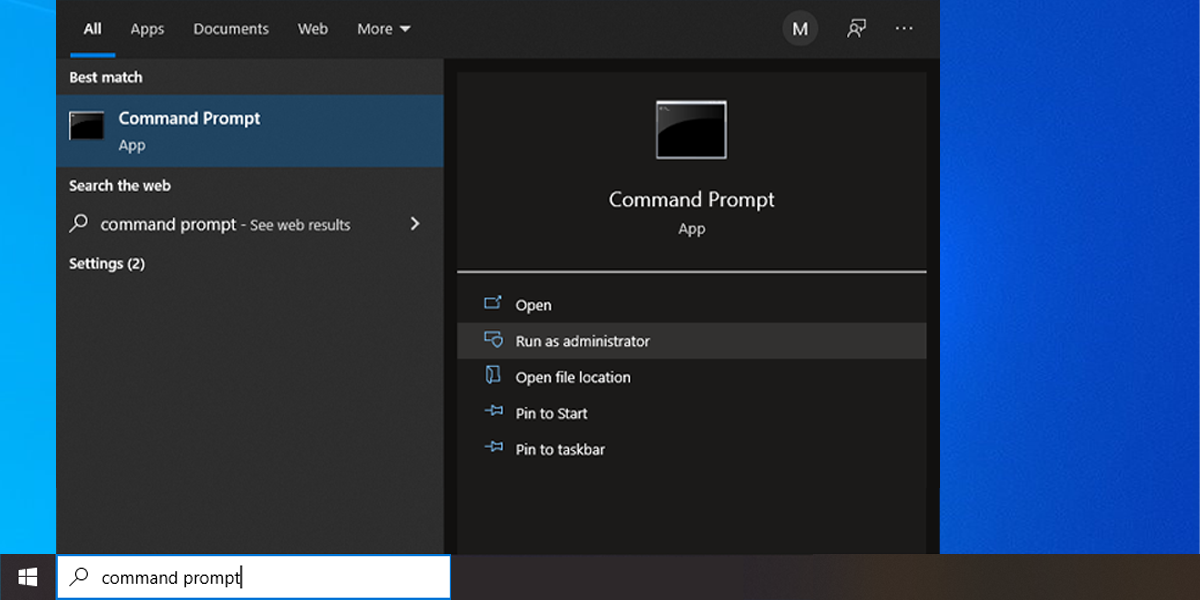
Once you've launched a command prompt, blazon sfc /scannow and printing Enter.
It should look like this:
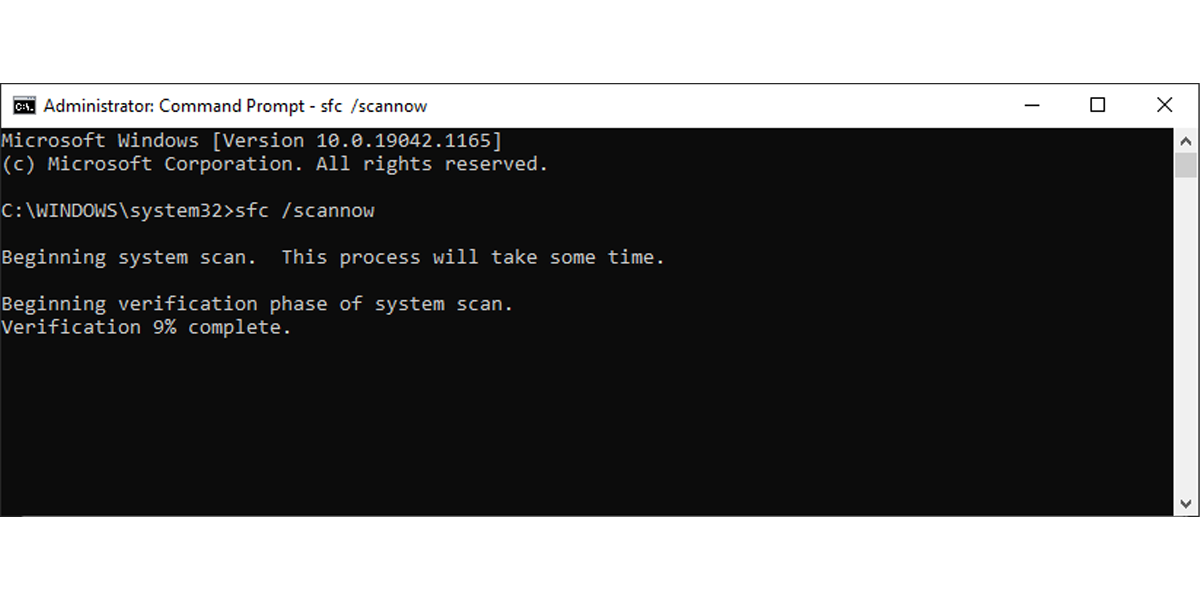
How long the process takes depends on your system resources. Y'all can keep using your computer while SFC runs. Just don't close the Command Prompt window.
In one case the process is finished, you will get one of the following letters:
- Windows Resource Protection did non detect any integrity violations. SFC couldn't detect whatever corrupted files on your calculator.
- Windows Resources Protection could not perform the requested performance. You might get this message if you didn't run the SFC scan in Prophylactic Fashion.
- Windows Resources Protection plant corrupt files and successfully repaired them. Your problem should now exist solved.
- Windows Resource Protection found corrupt files but was unable to fix some of them. In this example, you tin can effort to manually fix the corrupt files or move on to the next solution.
SFC.EXE repairs most issues. However, when SFC fails, a second tool called Deployment Imaging Service and Direction (DISM) must be used. DISM sometimes requires the original installation medium, such equally a USB wink bulldoze or optical disc.
2. Deployment Imaging Service and Management
If SFC fails to repair Windows, the next tool is DISM. DISM, like SFC.EXE, offers a tremendous number of command line options. It interacts primarily with Windows organization images (.WIM files). DISM can scan, repair, and make clean upwards problematic WIM files.
Once repaired, users tin run the SFC.EXE command (if information technology failed on the first try). Rarely does SFC fail -- but when information technology does, DISM offers the easiest repair method.
DISM includes several diagnostic features which tin determine whether or non abuse exists and if the damage is repairable. To browse your installation for errors and repair them, open an elevated command prompt (as explained above) and blazon in the post-obit:
DISM /online /cleanup-image /RestoreHealth 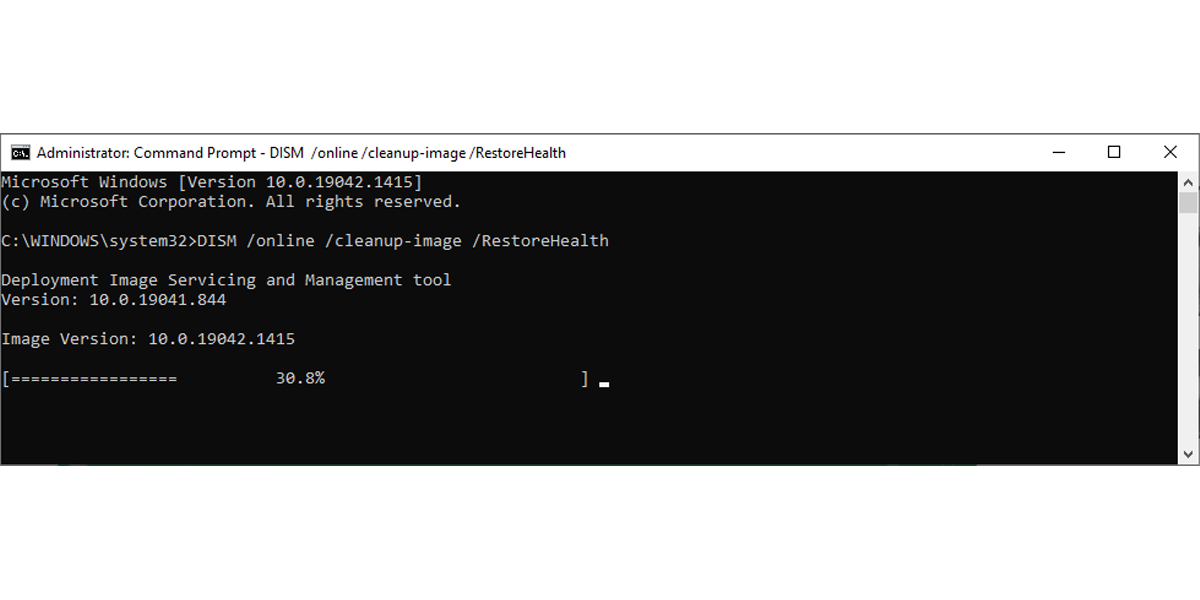
After DISM completes, it should create a report detailing any Windows system file issues. DISM informs the user whether or non the repair performance was successful. If information technology fails, the utility generates an error log.
If Windows suffers from organisation file abuse, DISM will brandish an uncorrectable error (code 0x800f081f). The source of the problem could originate from a corrupted installation disk, flake rot, or some other unknown cause.
Unlike some of the more than mutual problems afflicting Windows users, corruption can sometimes occur invisibly, peculiarly on older installations. Fortunately, other tools inside of Windows offer additional options.
three. Windows Troubleshooters
On tiptop of SFC and DISM, Windows includes a troubleshooter for some of the operating system'due south most mistake-prone systems. Troubleshooters often off the first line of defense against malfunctioning software.
For anyone suffering from networking, audio/sound, Net, driver, or—really—any problem, the Windows Troubleshooters should exist the first step in tackling the problem.
Get-go, launch Command Panel, and from the View by menu, select Big icons or Small icons. Then, click Troubleshooting. After the Troubleshooting window opens, you may want to choose View all from the left pane.
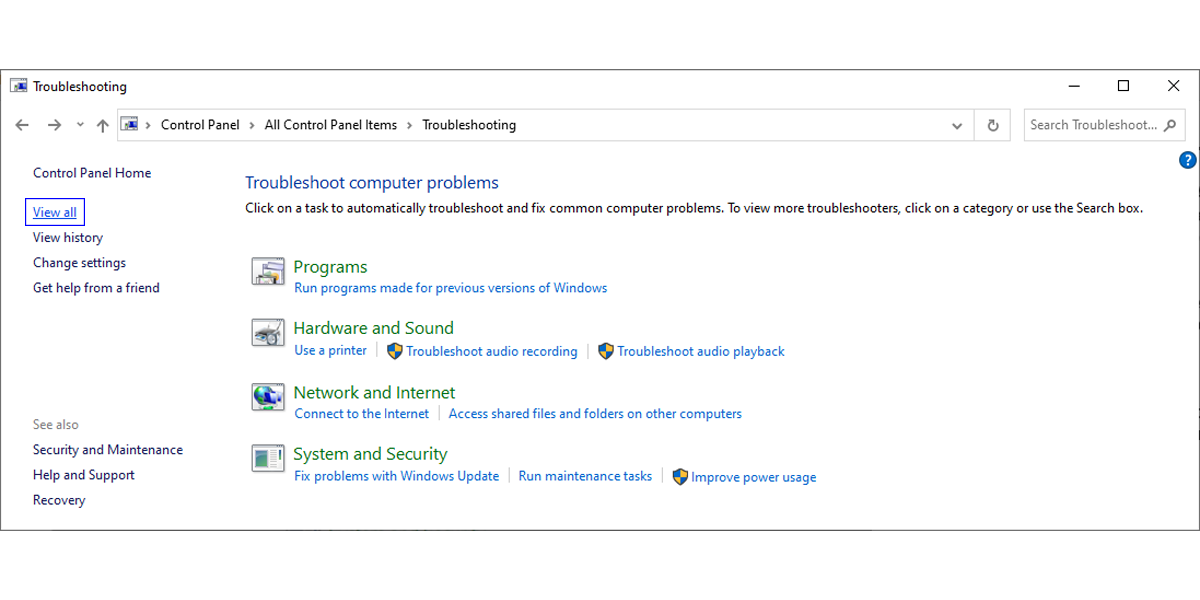
The View all selection exposes the entire range of Windows 10 troubleshooters, which cover the majority of Windows subsystems, such equally audio, printer, and network (all very troublesome subsystems).
If you're only experiencing sound problems, you tin pick one of the options dealing with sound troubleshooting from this carte.
Running each of the troubleshooters requires clicking on it. For example, you are now dealing with Windows corruption issues. But because none of these deals with corruption issues, try using Organisation Maintenance. Windows will run some bones maintenance routines, such equally synchronizing the organization clock.
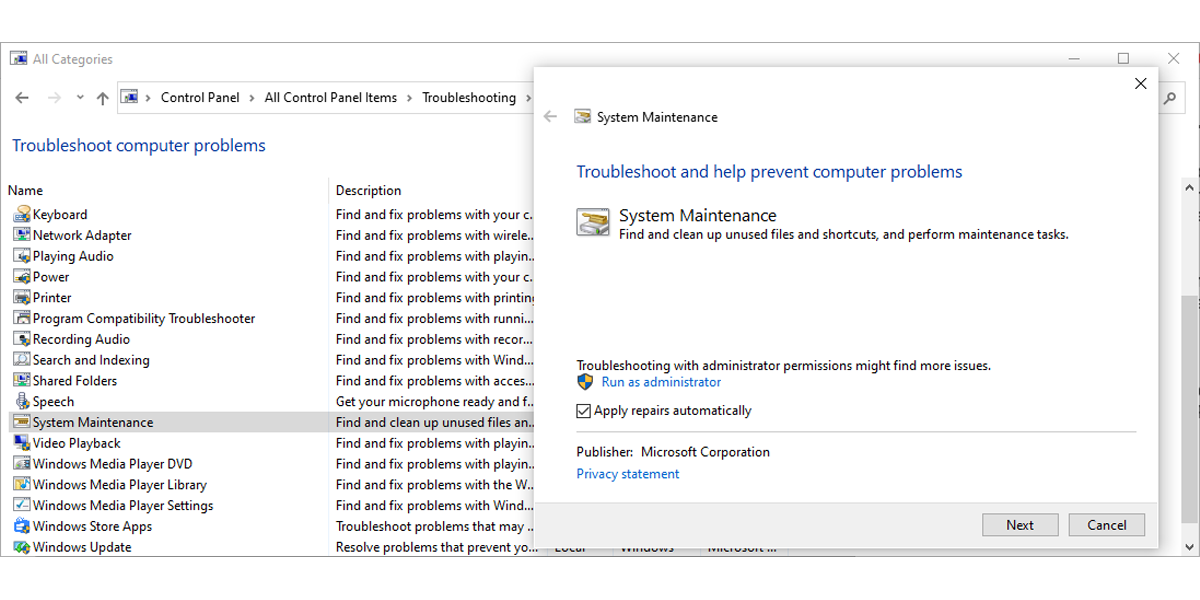
When Windows finishes the troubleshooting process, try running the SFC command. If it didn't gear up the consequence, motility on to the adjacent solution.
Nuclear Option: In-Identify Upgrade
If all else fails, the best choice is to re-download a copy of Windows and perform an in-identify upgrade of the operating system, rather than a restore or a reset/refresh.
An in-identify upgrade offers several advantages over performing a Windows 10 refresh or reset. An in-place upgrade of your operating system rewrites the arrangement files, which is most guaranteed to eliminate any corruption of the operating system.
In that location are two disadvantages, though: First, while users retain their information, they lose their updates and may suffer through a boring download and installation process. Second, if you suffer from malware problems, an in-place upgrade won't piece of work. Even so, an in-place upgrade fixes most corruption issues.
Upgrading from Windows 10 to Windows 10 requires the post-obit:
- A downloaded re-create of Windows ten, identical to your current operating system. Y'all can larn another copy of Windows through the Create Windows x installation media tool (beneath).
- Enough complimentary space on your hard drive to support downloading another re-create of Windows 10.
- The Create Windows ten installation media tool
After meeting the in a higher place requirements, run the Create Windows x installation media tool. Users then take the licensing terms. When prompted, select Upgrade this PC now then choose Next.
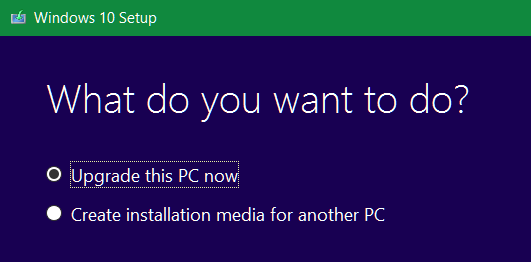
The upgrade process takes a very long time, equally the tool must download a complete copy of Windows ten. Expect to expect several hours, at the minimum. The process requires near no effort from the user. Windows should completely overwrite the original installation with a fresh copy of Windows, leaving behind the user'southward files, settings, and applications. Afterwards the upgrade tool finishes running, the computer should restart.
Unfortunately, even rewriting the operating arrangement could neglect to repair the issue.
Giving Up: Reinstalling Windows
If you still haven't fixed the trouble, reinstalling Windows x using a freshly downloaded re-create of Windows could be the only solution left. Fortunately, Microsoft made reinstalling Windows 10 easier than with other versions of the operating system. In fact, yous need only download the Create Windows 10 installation media tool and paradigm information technology onto a USB wink drive.
In one case you've finished reinstalling Windows 10 on your computer, run an SFC scan. If the issues persist through a clean install, information technology strongly suggests hardware failure.
Pretty much everyone should scan their computer for system file corruption issues. If you lot take problems, a uncomplicated scan could expose them, without a lot of effort. If problems exist, and SFC and DISM can't resolve them, the simplest method offers the nigh useful tool for dealing with Windows issues: the in-identify upgrade.
About The AuthorSource: https://www.makeuseof.com/tag/fix-corrupted-windows-10-installation/
Posted by: hubbsyonson39.blogspot.com



0 Response to "Any Way To Repair Install Windows 10?"
Post a Comment